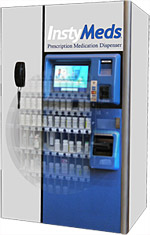Outrageous drug savings
It would be unthinkable to most of us to buy something without checking its price. But that’s exactly what happens when many of us pick up prescription meds. Only 5 percent of patients ask their doctors how much a drug costs, according to a national survey by the Consumer Reports National Research Center. But you shouldn’t be too shy to ask your doctor about prices – especially if you’re worried about coming up with the cash for your deductible or co-pay, or if you don’t’ have great drug coverage. Your doctor might be able to offer cheaper options, such as those here, that are as effective as super-expensive drugs (percentage savings are based on cash prices).
• Prescription heartburn remedy Nexium costs about $248 per month, but over-the-counter Prilosec costs $24 per month. Savings: 90%
• The drug Lovaza treats high triglycerides for about $213 a month. You might have seen its ads and wondered whether you should take it instead of your over-the-counter fish oil supplement. But most people don’t need a dose as potent as that in Lovaza. The American Heart Association recommends people with heart disease get 1 gram of omega-3 fatty acids per day, which you can get in three or four fish oil capsules for around $10 per month. People without heart disease need about 2 grams of omega-3s per week, which you can get by eating fish such as trout and wild salmon twice a week. Savings: 95%
• Lucentis injections for age-related macular degeneration (AMD) cost up to $23,400 per month. Avastin is a chemical cousin of Lucentis that costs $595 and is used off-label to treat AMD (off-label means that the drug is used in a treatment not officially approved the Food and Drug Administration). Savings: 97%
• The antidepressants Prozac and Sarafem are the same drug with different names. Sarafem, which is approved to treat premenstrual dysphoric disorder, costs about $243 per month, but its generic, fluoxetine, costs $4 per month with generic drug programs. Savings: 98%
The Bottom Line Even if you have insurance with great drug coverage, you should ask about prices and know your options. A cheaper, older drug might have a better track record than a new one. Also, drug costs affect everyone’s pocketbooks because premiums need to keep up with high health care costs. So speak up the next time you get a prescription.
Insert cash, press button for drugs
Vending machines that sell drugs? Yep, they’re here! They’re a great option for those after-hours drugstore runs (currently 34 states have them, according to the National Association of Boards of Pharmacy). Some of the kiosks have pharmacists fill the machines, and then you enter your info and pick up your prescription. Others have a robotic device that fills your prescription after you enter information. They can be especially helpful for medications that are on automatic refill (though not all do that).
 And they help you avoid long lines at the pharmacy counter. InstyMeds machines, which dispense drugs via an ATM-style kiosk, are usually placed in urgent care centers and emergency rooms. Some of the drug dispensers have a phone that connects to a pharmacist if you need help; others require you to have a videoconference with a pharmacist, who then gives directions to the robotic device to fill your meds. Coming soon: kiosks in airports and malls.
And they help you avoid long lines at the pharmacy counter. InstyMeds machines, which dispense drugs via an ATM-style kiosk, are usually placed in urgent care centers and emergency rooms. Some of the drug dispensers have a phone that connects to a pharmacist if you need help; others require you to have a videoconference with a pharmacist, who then gives directions to the robotic device to fill your meds. Coming soon: kiosks in airports and malls.
Article Source: ShopSmartMagazine

